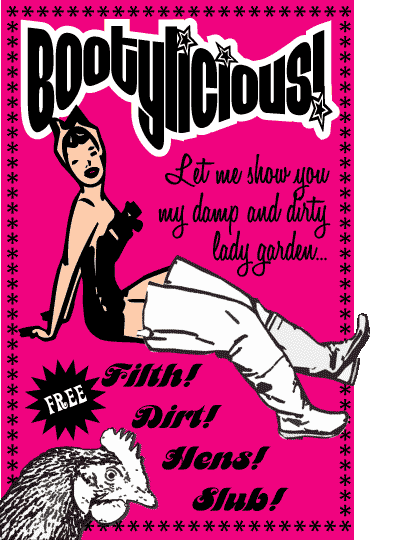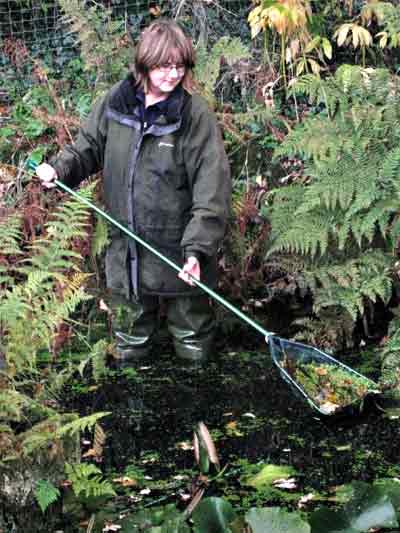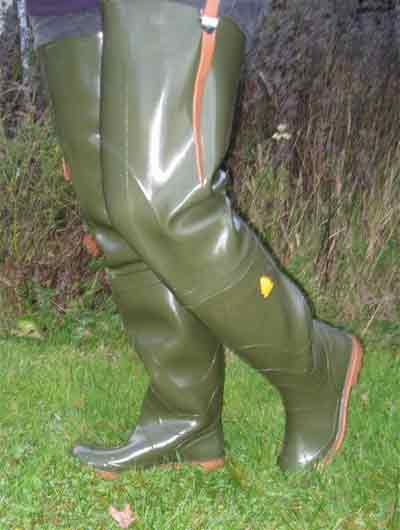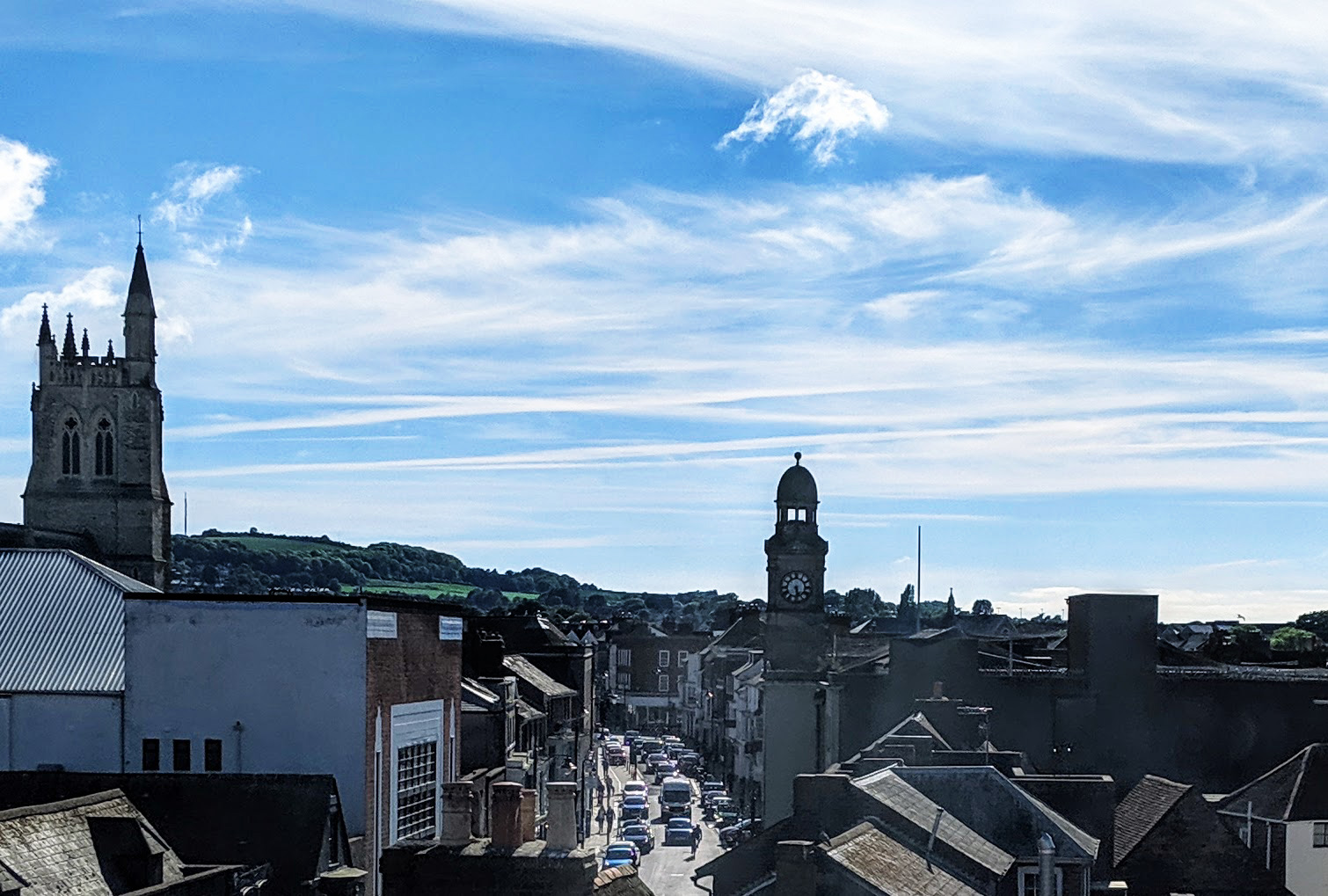Dirty goings-on in thigh-high rubber
By Ruth D’Alessandro, The Wildlife Gardener Phwoar! The Wildlife Gardener has at last got herself some thigh-high rubber:

This means that I can now get thigh-deep and give the Wildlife Pond the jolly good slubbing out it deserves. For now is that window of cleaning-out opportunity between the newts leaving the pond to hibernate and the frogs going in to do the same thing. There’s never a good time to clear out an established wildlife pond, but now is probably the least damaging in terms of the numbers of creatures in there. No matter how natural a pond is intended to be, in most gardens it will need some management. Ours is underneath an oak tree, so it gets clogged with leaves. Some of these fall to the bottom and form a kind of compost that is healthy for the pond in small amounts. Too much though, and the rotting vegetation releases nitrates that encourage algae and make the pond all green and slimy. I also fight a constant and heartbreaking battle with blanket weed. This chokes the water and creates nets that trap tadpoles, making them easy prey for the dragonfly and damselfly (order Odonata) nymphs lurking in the weed. This year saw extraordinary numbers of Odonata in the pond; so numerous that the numbers of tadpoles and froglets were significantly decreased. Those tadpoles that survived had injuries such as damaged or missing tails, and emerged froglet numbers were noticeably fewer. The same large amount of frogspawn as previous years was laid in the spring (13 clumps) but, come this July, the almost Biblical plague of froglets of previous years did not happen. Whether the presence of blanket weed gave the Odonata an advantage, I’m not sure. But the one thing I am sure about is that I want to get the nasty weedy stuff out and composted before it claims any more victims. So how do you slub out a pond? The first thing I do is pull out all the blanket weed with a grappling hook. I drag it all out and leave it on the edge of the pond for a week or so. This allows any trapped critters to disentangle themselves and find their way back home. Odonata nymphs can live in their aquatic stage for several years, and they are tough enough to clamber out and find their way back. Then, I skim off the duckweed with a pond net. Because I’m a big softy, I carefully check each netful for newt efts, water snails and pond shrimps. These I gently pick up and repatriate by hand. Now I have my sexy waders I can physically get into the pond to cut back the marginal plants; bracken, ferns, nettles, lady’s mantle, and auricula, to prevent dead vegetation clogging the water. I try to reduce the water lilies by a third each year by pulling up the big main root and cutting some of it off. I also have to check the drainage pipe to make sure a big fat frog hasn’t died and blocked it up, otherwise the pond fills up and overflows across the garden and down onto the road. This year the hens’ run is in the way, so tempting as it might be to let the pond wash out the run, I’m not sure the ladies would much enjoy the experience.

The final job is trawling the bottom of the pond with a lawn rake and taking out some of the rotten leaves and mud. This smelly mixture will be left on the side for a few days, again to allow any bottom-dwelling organisms to escape, then this rich mixture will end up on the compost heap. In fact, all debris from the pond makes a fantastic contribution to the compost along with vegetable peelings, old plants, chicken manure, lawn mowings, weeds and any more dung I may acquire. A bit of late-autumn maintenance in the form of leaf skimming is then needed to prevent the pond filling back up with leaves, and then I leave well alone. Frogs will return to the pond to hibernate in the remaining sunken leaf litter and under stones and the bank. Then in the spring, when the waters churn with amorous amphibians, I can rest in the knowledge that my autumn pond housework has created an environment for all manner of pond life to thrive. And the waders? Well, they go back in the cupboard. Or maybe not…

- Spurn Spawn! - 26th February, 2014
- Bluebells on wheels: axles of evil? - 2nd February, 2011
- Raising the ba: Wildlife and the Ancient Egyptian Book of the Dead - 8th January, 2011


Oh I do, Bob, I do…
Thank you. Pond, water, frogs, and boots – it’s great. In addition, you are very sexy in your wading boots(wadsers)! You – as a real giantess and can easily wander through the deep lakes and easily trample for the fun of any metropolis 🙂 🙂 🙂
Thanks, Bill. I often think that observing the goings on in a back-garden pond is more exciting than watching boring lions on an exotic holiday.
Nice post. A good reminder how a “garden pond” can teach us about aquatic life and life cycles. Interesting notes on Odonata nymphs preying on juvenile amphibians.
Good looking boots, too!
bill;www.wildramblings.com